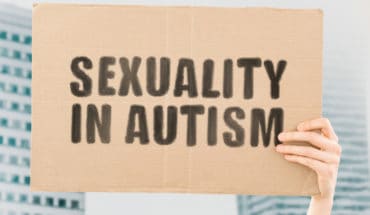Autism brings into sharp focus what it is to be human. I’d summarise autism as being a different way of living.
Autism is a lifelong disorder affecting some 700,000 people in the UK. Many (55 per cent) are below the historic cutoff point of 70 IQ. Others, often described as having Asperger’s Syndrome, are highly intelligent. All of them have difficulties in communicating and forming relationships with others and find it hard to make sense of the world around them.
It used to be considered a rare disorder. Today the latest estimates are of one in every 68 children, the increase being largely accounted for by redefinition and better diagnosis.
There are no reliable estimates for adults. And next to no actuarial information. A recent study concluded that autism itself had no impact on life expectancy – the many early deaths stemming from the co-morbidities (mainly epilepsy) and from accidents/suicides.
The incidence does not seem to vary by continent, by climate, by diet. It certainly varies by gender. Autism is found four times more often in boys than girls. It presents itself somewhat differently, so there may be an element of underdiagnosis for girls.
One of the early studies found a statistically significant link between autism and engineer parents – there have been a raft of studies linking autism to difficult births, to Jewish parents, to mercury from mobile phones, various products of the electronic age, to first born children … none adding very much to understanding but the many adding to confusion.
Equally, there’s no evidence that vaccines are contributing to the increase in autism. The MMR case should have finished when Andrew Wakefield was struck off the medical register. But its serious repercussions linger on.
Genetics
Science has moved on from behaviour to biology – what autism is as distinct from what it looks like. It has been known for a long time to run in families. Parents with a child with autism, have a 5 or 6 per cent chance of having a sibling also affected. Longitudinal studies specific to autism concentrate on children at risk: by tracking the development of babies born with an older sibling with autism, researchers are able to spot potential problems (not necessarily make accurate diagnoses) at 1 year, sometimes as early as 9 months. Valuable time gained in which to intervene.
Studies have concluded that between 400 and 1000 genes contribute to the condition. Clues also come from simpler, gene disorders such as Fragile X where there are autism symptoms.
Diagnosis
A diagnosis of autism covers such a wide range of disability that we refer to autisms. Some are regressive (more common than used to be thought), some not; some are associated with epilepsy, some not; some with learning disability; some with high functioning Asperger’s Syndrome. We say autistic spectrum but since it ranges in at least three dimensions – language, social, obsession with order – we should perhaps talk of an autistic space. Whichever which way, we know very little.
Interventions
It is clear that certain interventions help certain children, but no one knows which is going to help whom and in what circumstances. Of the more than seven hundred known interventions only a handful are better than placebo. So parents can bankrupt themselves (emotionally, financially) for treatments having absolutely no effect – sometimes to an abusive level: a strict training regime of a young child for 40 hours a week is not to my mind respectful of that little person. There have been tragic examples of more severe interventions and I’m reminded of Florence Nightingale’s stricture to “do no harm”. To follow the Hippocratic oath, we need always to distinguish between child assent, parental permission, legal authorisation and moral responsibility.
There is no cure for autism but it’s ever our dream (or is it nightmare?), that inside every child with autism there’s a “normal” child trying to get out. Few adults who received a childhood diagnosis of typical autism are self-sufficient. Less than 10 per cent do well and the remainder are dependent on support in all aspects of life. The additional lifetime cost resulting from autism with learning disability is estimated to average £4.6m – only 7 per cent education, some in direct support, most of it in lost employment. Britain’s national cost is a staffering £34bn a year. Current work is targeted at establishing the unavoidable costs.
Autism is no longer on the fringes of policymaking, provision and importantly knowledge. It is a mainstream and very serious concern. It has recently rebranded as AQ, the autistic quotient, implying that it is an inherent human condition. To understand the autistic mind and allow lives of equal citizenship is a major and crucial concern.
- Autism: Puberty and sexuality - 4th September 2020
- Update on Autistica - 7th May 2019
- Autistica’s Discover Network - 7th December 2018







The diagnostic process, the number of meetings with different professionals, the uncertainties, leave many parents exhausted and confused when a diagnosis of autism spectrum disorder is finally arrived at. Sometimes the diagnosis opens doors in terms of educational options or extra help, the advice of members of a self help group may be the most effective pointers to what is available. Outside of big cities, and when CAMHS services are cutting back everywhere, options are likely to be very limited. Parents are often uncertain when conventional medications are advised or suggested. As well they might be. The evidence base is… Read more »